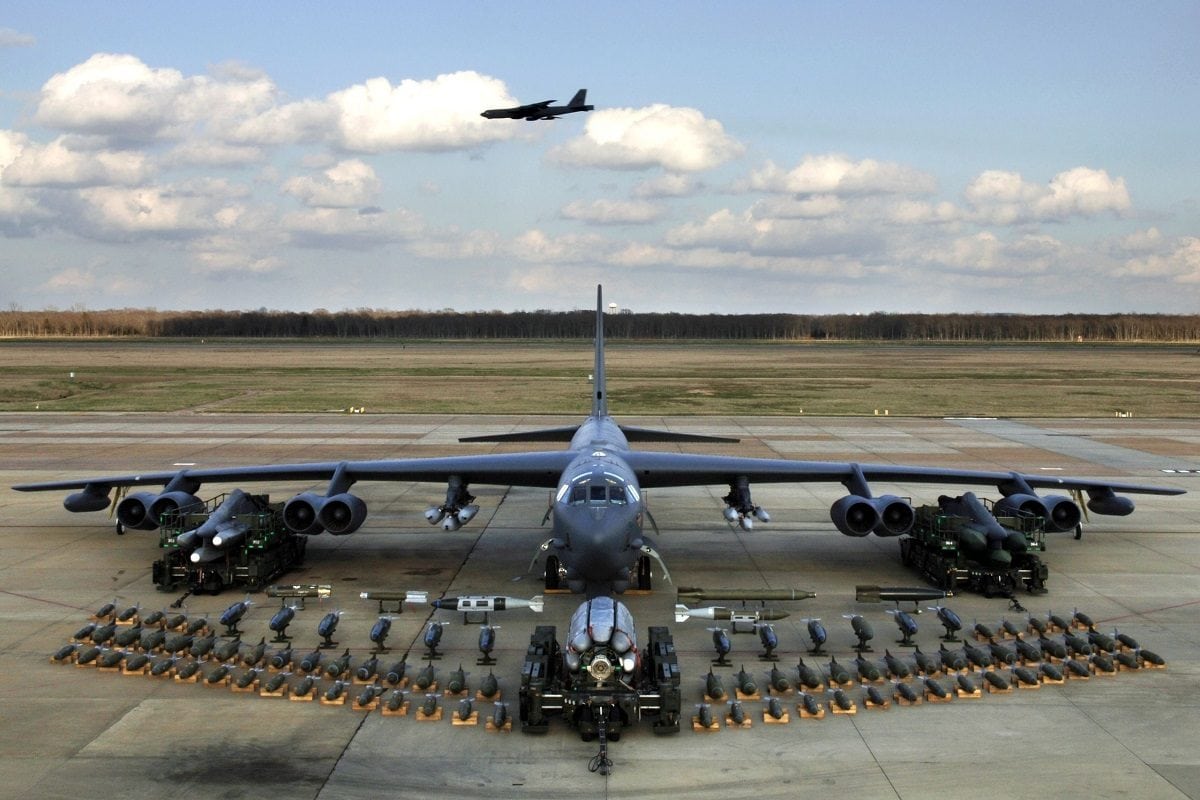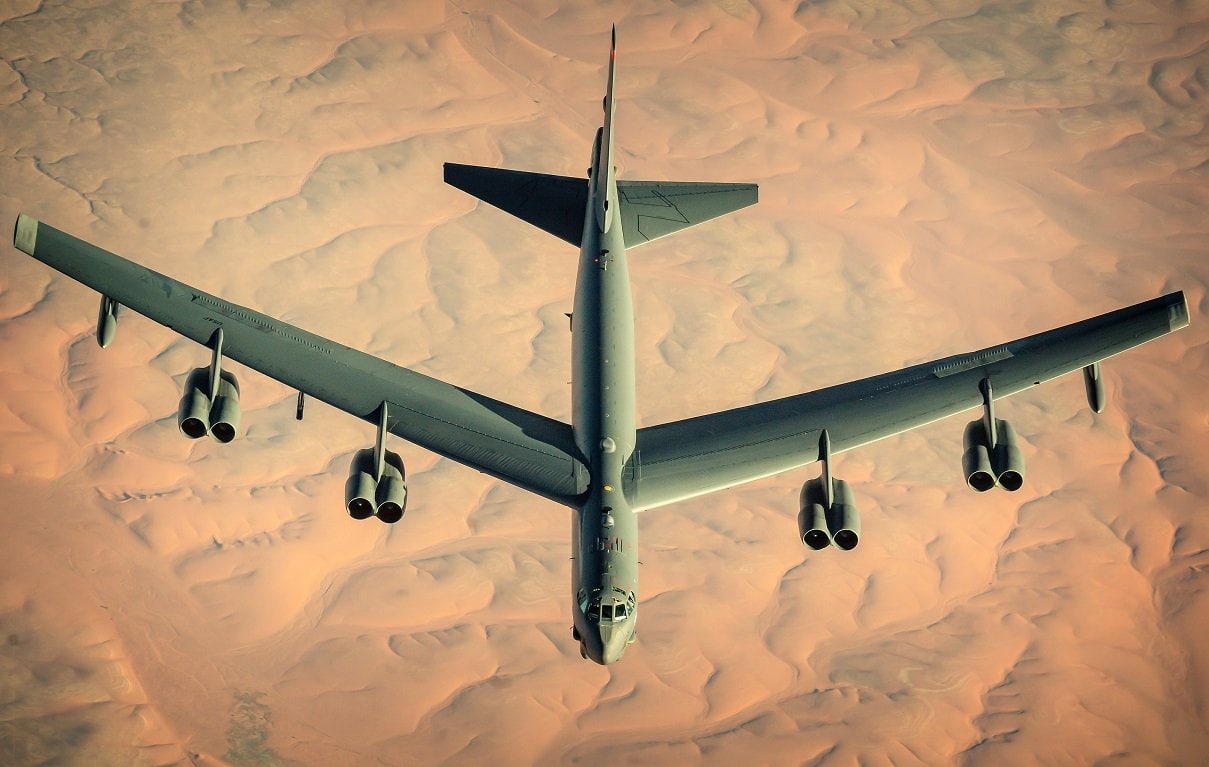Anyone who said, “Getting there is half the fun,” likely didn’t rack up the frequent fliers. However, for the crews of the United States Air Force’s B-52H bombers, they recently took the long way home from the recent deployment to Morón Air Base, Spain. The Cold War-era Stratofortress bombers from the 2nd Bomb Wing, Barksdale Air Force Base (AFB), Louisiana, had been sent to Spain on May 17, and last week made the return trip to Cajun Country via a 12,000-mile mission through the Arctic and Pacific.
The reason for all of this: to showcase U.S. power projection capabilities that span the globe.
The total flight took 27 hours and required refueling with flying tankers from three major commands while the tankers came from the100th Air Refueling Wing, Royal Air Force (RAF), Mildenhall, England; the 92nd Air Refueling Wing, Fairchild AFB, Wash.; the 36th Wing, Andersen AFB, Guam; the Hawaii Air National Guard’s 154th Wing, Joint Base Pearl Harbor-Hickam, Hawaii; and the 60th Air Mobility Wing, Travis AFB, Calif.
Stars & Stripes reported that during the extended mission, the B-52H bombers had integrated with Norwegian joint terminal attack controller personnel over the Nordic region, and then through the Arctic Circle. The bombers flew into the northern Pacific to support the United States Indo-Pacific Command.
“Our unparalleled global strike capability is the backbone of our combat-credible force,” Gen. Jeff Harrigian, commander of U.S. Air Forces in Europe and Air Forces Africa, said in the news release. “That force is the foundation of our extended deterrence strategy that safeguards both U.S. security and that of our allies and partners.”
Prior to the return flight, the bombers completed a final mission for the latest Bomber Task Force rotation with a flight over Morocco.
“The final two days of flights over Morocco and through the Arctic are great examples of our team’s range and flexibility,” added Harrigian. “My hope is that our air operations over the last month have demonstrated our unwavering commitment to our European and African partners and sent the message that we are invested in creating opportunities to grow together.”
The flight of the Stratofortresses over Morocco marked the third time bomber aircraft conducted operations in the U.S Africa Command during the deployment. The B-52Hs had previously conducted integration and interoperability training with Tunisian air and ground forces during a bilateral training sortie. Two weeks later, the B-52s completed a mission to the Gulf of Guinea before flying along the western and northern African coasts on their return to Morón AB, Spain.

A U.S. Air Force Boeing B-52H Stratofortress of the 2d Bomb Wing static display with weapons, at Barksdale Air Force Base, Louisiana (USA), in 2006.
The Air Force announced that the strategic bombers had also completed over a dozen missions integrating with allied and partnered nations while operating out of Spain for the past month. Additionally, the aircraft also supported special operations training with joint terminal attack controllers from Canada, Latvia and Lithuania, and integrated with U.S. Naval Forces Europe-Africa’s Patrol Squadron 40 (VP-40) during the annual BALTOPS exercise, as well as various other aircraft assigned to USAFE-AFAFRICA throughout the deployment.
Bomber Task Force missions demonstrate U.S. commitment to the collective defense of NATO and contribute to stability in multiple theaters. The ability to quickly respond and assure allies and partners rests upon the fact that U.S. forces are here and ready, in Europe and Africa.
Peter Suciu is a Michigan-based writer who has contributed to more than four dozen magazines, newspapers and websites. He regularly writes about military small arms, and is the author of several books on military headgear including A Gallery of Military Headdress, which is available on Amazon.com.

